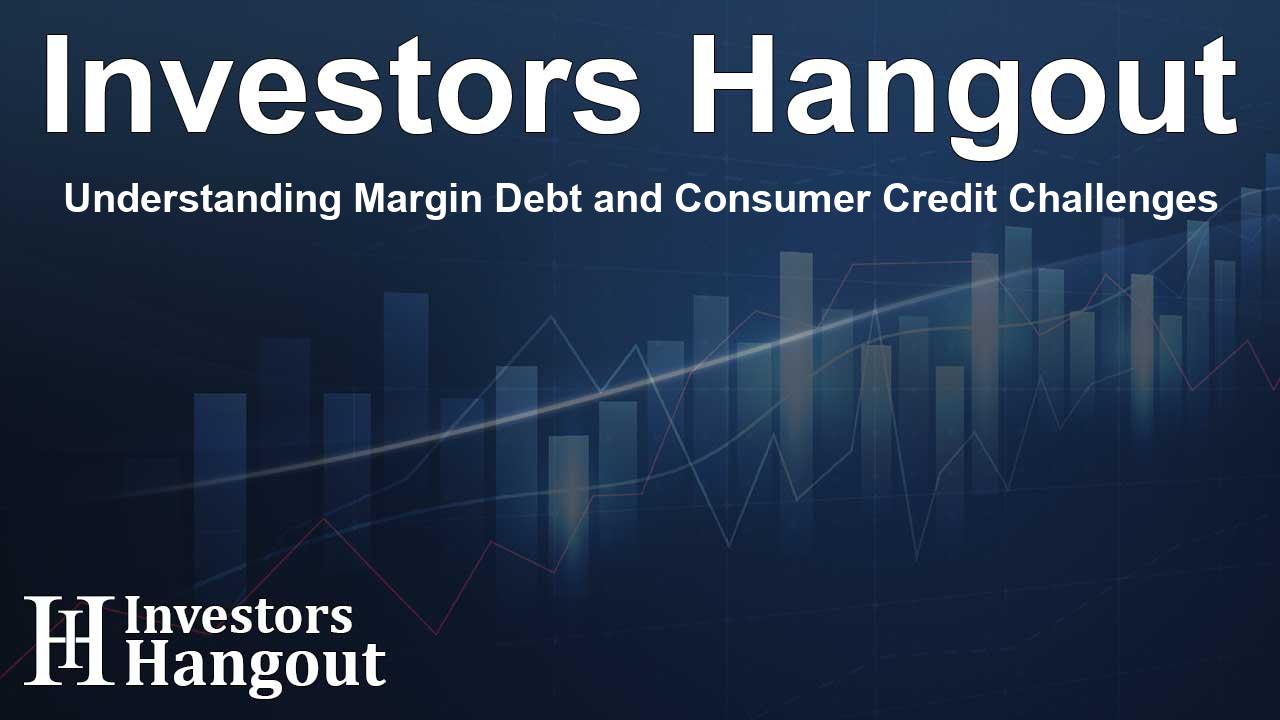Understanding Margin Debt and Consumer Credit Challenges

The Current State of Margin Debt
The United States is observing a remarkable surge in margin debt, which has reached an astonishing $1.1 trillion. This figure escalated by $67 billion in just one month. As investor confidence grows amid thriving market conditions, many are opting to borrow additional funds to increase their investments. Yet this scenario prompts a vital question: just how much financial leverage can the market sustain without facing dire consequences?
What is Margin Debt?
Margin debt refers to the funds borrowed by investors from brokerage firms to enhance their trading potential. This strategy allows for amplified profits during a rising market, but it equally intensifies losses if asset values plummet. In adverse situations, brokers can initiate margin calls, compelling investors to liquidate their holdings to repay their debts, which may lead to widespread market sell-offs.
The Margin Debt Landscape
Currently, margin debt accounts for about 2% of the total value of the S&P 500, a figure that notably exceeds levels seen during the dot-com bubble of the early 2000s. This situation indicates that leverage has become an essential component of today’s market dynamics, with risk appetites continuing to surge higher.
Impacts of Leveraged ETFs
While discussions regarding the approval of 5x leveraged exchange-traded funds (ETFs) are ongoing, these investment vehicles could enable investors to multiply their returns and risks significantly. For instance, a mere 2% shift in the price of Tesla (NASDAQ: TSLA) could translate into a drastic 10% movement for such ETFs, posing a significant risk to overleveraged investors.
Lessons from the Crypto Market
A recent incident in the cryptocurrency space illustrates the dangers of excessive margin transactions. On a day in October, digital assets saw an astonishing loss of $19 billion, impacted by automated margin calls that forced over 1.6 million traders to sell. The rapid price declines triggered a domino effect, leading to further sell-offs and a total breakdown of market liquidity.
Stock Market Safeguards
Unlike cryptocurrencies, traditional stock markets benefit from built-in safety mechanisms—such as circuit breakers and centralized clearing—designed to pause trading during periods of extreme volatility. These protections aim to buy time and avert a complete market collapse, but they too have inherent limitations.
The Credit Card Debt Crisis
Concerns about leverage extend beyond institutional trading; consumer debt is rising to alarming levels as well. Recent data indicates that American households are now responsible for over $1.33 trillion in credit card debt, marking an all-time high.
Consumer Debt Implications
Numbers reveal that nearly 50% of U.S. households are carrying debt balances month to month, facing interest rates that average above 20%. Quite alarmingly, even after multiple Federal Reserve interest rate cuts, borrowing costs for consumers remain high.
Expectations for Future Debt Patterns
Experts caution that consumers might not witness immediate reductions in credit card interest rates, despite falling benchmarks. Factors influencing credit card rates include the overall credit environment and individual credit scores. Consequently, any disruption in market conditions could have severe repercussions for everyday Americans.
Investor Behavior and Market Resilience
Right now, many investors are wagering on continued market stability utilizing borrowed funds. However, history serves as a reminder that when leverage reaches such extraordinary heights, prolonged periods of calm are rarely attainable. It is clear that both margin and consumer debt levels not only influence financial markets but also carry significant risk for investors and consumers alike.
Frequently Asked Questions
What is margin debt?
Margin debt is the borrowed money investors use to purchase more securities than they can afford with their own funds, aiming to amplify their returns.
How does margin debt affect the stock market?
High margin debt can lead to increased volatility as market declines trigger forced sell-offs, potentially resulting in broader market downturns.
What are the dangers of leveraged ETFs?
Leveraged ETFs can drastically amplify both gains and losses, posing significant risks for investors, especially in volatile markets.
How much credit card debt do Americans currently hold?
Americans collectively owe over $1.33 trillion in credit card debt, representing a historical peak in consumer borrowing.
What influences credit card interest rates?
Credit card interest rates are impacted by a combination of overall market conditions and individual credit profiles, often resulting in slower adjustments to rate cuts.
About The Author
Contact Ryan Hughes privately here. Or send an email with ATTN: Ryan Hughes as the subject to contact@investorshangout.com.
About Investors Hangout
Investors Hangout is a leading online stock forum for financial discussion and learning, offering a wide range of free tools and resources. It draws in traders of all levels, who exchange market knowledge, investigate trading tactics, and keep an eye on industry developments in real time. Featuring financial articles, stock message boards, quotes, charts, company profiles, and live news updates. Through cooperative learning and a wealth of informational resources, it helps users from novices creating their first portfolios to experts honing their techniques. Join Investors Hangout today: https://investorshangout.com/
The content of this article is based on factual, publicly available information and does not represent legal, financial, or investment advice. Investors Hangout does not offer financial advice, and the author is not a licensed financial advisor. Consult a qualified advisor before making any financial or investment decisions based on this article. This article should not be considered advice to purchase, sell, or hold any securities or other investments. If any of the material provided here is inaccurate, please contact us for corrections.
